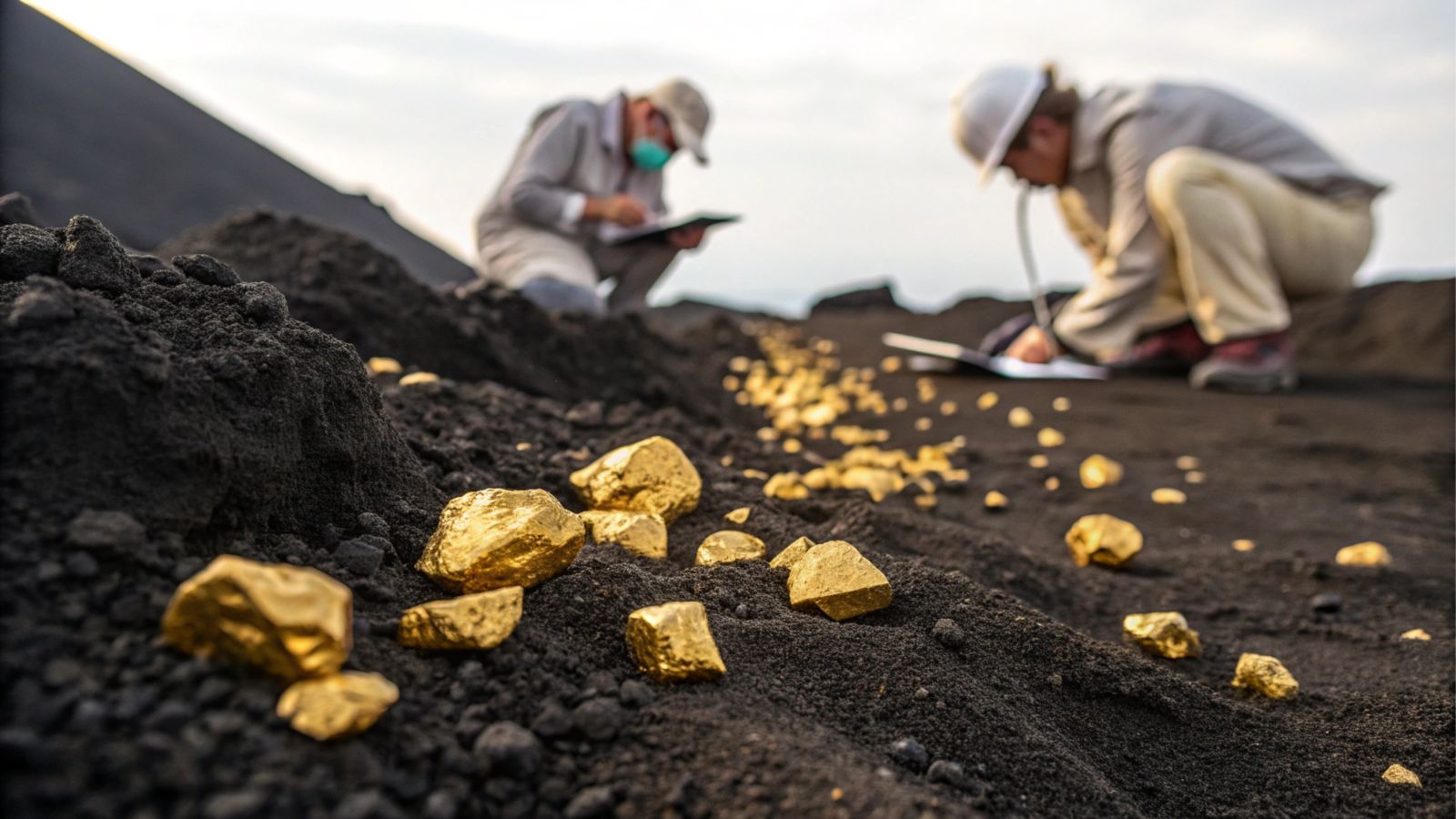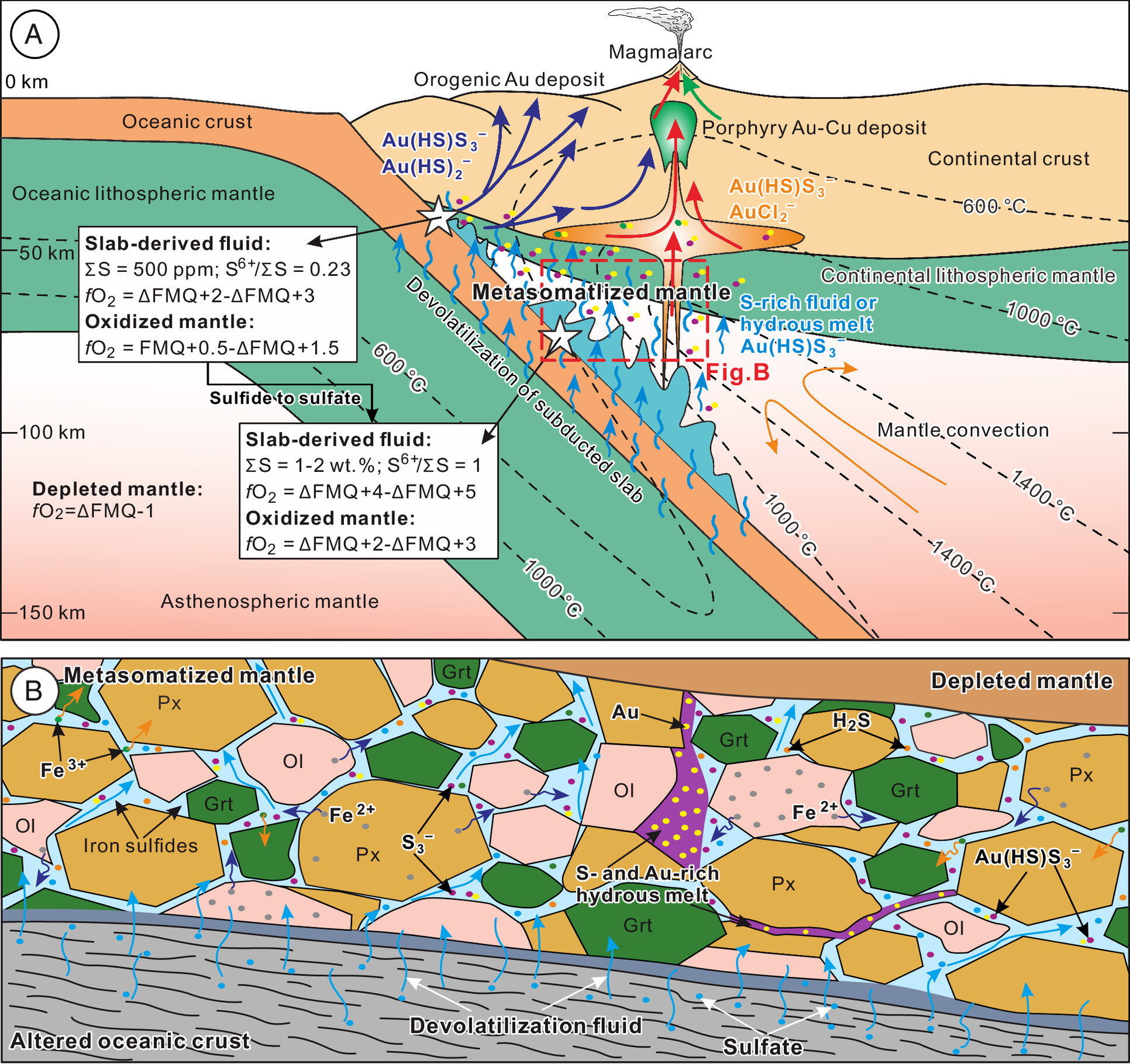Researchers discover where and how gold rises to the Earth's surface ⛏️
Published by Adrien,
Source: Proceedings of the National Academy of Sciences
Other Languages: FR, DE, ES, PT
Source: Proceedings of the National Academy of Sciences
Other Languages: FR, DE, ES, PT
Follow us on Google News (click on ☆)
An international team, including a researcher from the University of Michigan, has identified a gold-trisulfur complex. This complex plays a key role in transporting gold from the Earth's mantle to the surface. The results, published in the Proceedings of the National Academy of Sciences, provide new insights into the mechanisms of gold deposit formation.

Unfortunately, it's not as simple as in this illustration...
Gold deposits associated with volcanoes form in subduction zones. These zones, where an oceanic plate dives beneath a continental plate, are the site of intense magmatic activity. The gold-trisulfur complex forms under specific pressure and temperature conditions, allowing gold to migrate to the surface.
Adam Simon, a professor at the University of Michigan, highlights the importance of this discovery. The thermodynamic model developed by the team shows that the gold-trisulfur complex is essential to explain the high concentrations of gold in certain mineral systems. This breakthrough could improve mining exploration strategies.
The researchers combined laboratory experiments with thermodynamic models to validate their results. This approach allowed them to accurately predict the conditions necessary for the formation of the gold-trisulfur complex. The results apply to subduction zones around the Pacific Ocean, where many active volcanoes are located.
This study is the result of a collaboration between scientists from China, Switzerland, Australia, and France. It makes a significant contribution to understanding the geochemical processes involved in the formation of gold deposits. The implications for the mining industry are potentially significant.

Credit: Proceedings of the National Academy of Sciences (2024).
Subduction zones, such as those surrounding the Pacific Ocean, are complex geological environments. The magma formed there transports precious elements, including gold, to the surface. The discovery of the gold-trisulfur complex explains why some of these zones are particularly rich in gold.
The researchers hope that these results will allow for better targeting of mining explorations. By understanding the specific conditions necessary for the formation of gold deposits, it will be possible to optimize searches and reduce associated costs. This discovery opens new perspectives for the mining industry.
Finally, this study highlights the importance of international collaborations in Earth sciences. By combining diverse expertise, the researchers were able to develop a robust model that improves our understanding of geological processes. These advances are essential for the sustainable exploitation of mineral resources.
What is a subduction zone?
A subduction zone is a region where an oceanic tectonic plate dives beneath a continental plate. This process is the origin of many geological phenomena, such as earthquakes and volcanic eruptions.
In these zones, magma formed in the Earth's mantle can rise to the surface. This magma transports precious elements, including gold, which then concentrate in mineral deposits.
Subduction zones are particularly active around the Pacific Ocean, in a region known as the 'Ring of Fire'. These zones are therefore prime targets for mining exploration.
Understanding the processes that occur in subduction zones is essential to predict where and how gold deposits form. It also allows for better anticipation of the natural risks associated with these regions.
How is gold transported to the surface?
Gold present in the Earth's mantle is transported to the surface by magma. This process is facilitated by the formation of chemical complexes, such as the gold-trisulfur complex identified in this study.
The gold-trisulfur complex forms under specific pressure and temperature conditions. These conditions are encountered in subduction zones, at depths of 30 to 50 miles below the surface.
Once formed, the gold-trisulfur complex is highly mobile in magma. It can thus migrate to the surface, where gold concentrates in mineral deposits.
This discovery allows for a better understanding of why some subduction zones are particularly rich in gold. It also opens new perspectives for mining exploration, by allowing the targeting of the most promising regions.